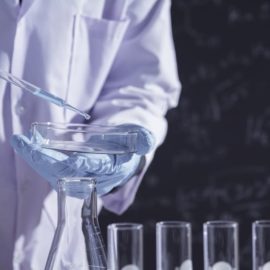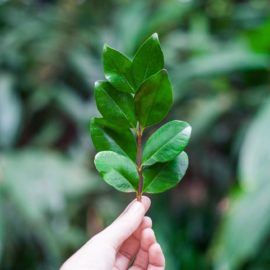Stability testing in cosmetics takes a new meaning when it comes to green or natural cosmetics. The rising trend of natural ingredients in cosmetics reflects a growing consumer demand for natural products, which are perceived as safer, more sustainable, and aligned with wellness principles. However, brands and ingredient developers must take into account how formulating these products presents several unique challenges, some of which are directly related to stability.
With a growing awareness regarding the potential impacts of synthetic chemicals on health and the environment, consumers are actively seeking cosmetic products formulated with natural ingredients. As a response, brands are increasingly integrating botanical extracts, plant-based oils, and other natural components into their products.
As side quests, both brands and consumers are focusing on enhancing ingredient transparency and sustainability all while optimizing their efficacy. In this regard, the realm of natural cosmetics has become fertile ground for major breakthroughs for increased sustainability in the cosmetic industry, such as the use of plant endophytes for ingredient development.
As more and more successful formulas incorporate natural ingredients, understanding stability testing in cosmetics that are plant-based stands out as a key preoccupation.
Content
What is stability testing in cosmetics?
Stability testing in cosmetics refers to the processes that evaluate the physical, chemical, and microbiological stability of a cosmetic product over time.
As such, its goal is to ensure that the product maintains its intended quality, efficacy, and safety throughout its shelf life, even through the various storage conditions it might encounter, such as temperature fluctuations, light exposure, and humidity.
Stability testing in cosmetics typically looks into the three following aspects:
- Physical stability: it evaluates changes in the appearance, color, odor, texture, and viscosity of the product. It thus ensures the product maintains its desired sensory attributes and rules out any undesirable changes (such as phase separation, crystallization, or precipitation).
- Chemical stability: this type of testing assesses the degradation of active ingredients, preservatives, and other components in the formulation, identifying any potential reactions or interactions that may occur between ingredients, leading to changes in product composition or the formation of impurities.
- Microbiological stability: the susceptibility of the product to microbial contamination and growth over time is evaluated. This type of stability testing in cosmetics also assesses the effectiveness of preservatives in preventing microbial proliferation throughout the product’s shelf life.
Why stability testing cosmetics is more challenging for natural ingredients
Natural ingredients present certain particularities that must be addressed when considering stability testing in cosmetics, including:
- Oxidation: natural active ingredients are prone to oxidation when exposed to air, light, and heat, which might lead to changes in color, odor, and efficacy that must be tested. For instance, some natural active ingredients contain unsaturated bonds (such as double bonds in fatty acids or polyphenols in plant extracts), which are more susceptible to oxidation by reactive oxygen species (ROS) present in the environment.
- Absence of synthetic preservatives: the inclusion of natural preservatives as alternatives to synthetic options is precisely one of the key perceived advantages by consumers in natural formulations. However, these natural preservatives must be tested adequately in order to ensure microbiological stability is maintained.
- Potential compatibility issues: cosmetic developers must ensure compatibility between natural ingredients, as some ingredients may interact unpredictably, affecting the stability and efficacy of the final product.
- Emulsions: natural cosmetics containing emulsions present their own set of challenges, as they may be particularly susceptible to stability issues such as phase separation or emulsion degradation. While conventional cosmetics might employ synthetic emulsifiers and stabilizers that help maintain emulsion stability over time, cosmetic formulators working with natural ingredients must develop their own strategies and apply the right stability testing methods.
How to address the challenge of stability testing cosmetics in natural formulations
The global natural cosmetics market is expected to expand at a CAGR of 7.4% until 2027, reaching USD 63236.0 million by that year, according to Precision Reports. This and other positive forecasts reinforce the need to develop specific strategies for natural formulations that turn into differentiated and successful products in an increasingly saturated market. Many of these strategies must necessarily address formulation issues, and stability testing in cosmetics represents a key aspect.
In this context, successful cosmetic formulators within the natural segment should focus on the following aspects:
- Careful ingredient selection in order to choose botanical ingredients with known stability profiles. Because not all botanical extracts are created equal, it’s advisable to choose ingredients that are less prone to degradation or color changes, and which show a track record of being used in cosmetics without significant stability issues.
- Optimal formulation should balance the inclusion of botanical ingredients, stabilizing agents, antioxidants and preservatives, while also minimizing potential undesired interactions.
- Rigorous stability testing protocols must be implemented that are tailored for natural botanical ingredients. These may include factors such as seasonal variations, geographical origin, and extraction methods; as well as accelerated aging studies and real-time stability testing, simulating the product’s behavior under different storage conditions over time.
- Appropriate manufacturing practices and quality control measures must be implemented to ensure the consistency and purity of botanical ingredients
All in all, these decisions should result in a comprehensive approach that tackles stability testing for natural cosmetics and its particularities, effectively addressing potential challenges and ensuring maximum efficacy and safety.
At Provital, we’re at the forefront of natural cosmetic development, working at the intersection of cosmetic science and technology to push natural ingredients to a new level. Through high-tech cosmetic testing, we’ve been able to develop a new generation of cosmetic procedures that include tailor-made stability testing for natural ingredients.
Our dermo-hacking ingredient Altheostem™ represents a key example of these efforts, a high-quality well-aging product without any of the conventional synthetic preservatives.
The result is a holistic approach to ingredient formulation that elevates ingredient efficacy and safety to the highest standards.
No comments yet
There are no comments on this post yet.





Leave a comment